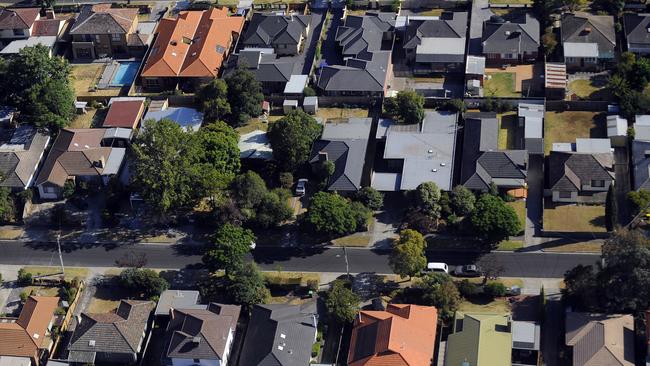Hardship hell: Lenders abandon distressed borrowers
The financial regulator has lashed 10 large home lenders, including the nation’s biggest banks, for abandoning customers in hardship.

Australia’s biggest home lenders have been lashed for failing distressed customers, ignoring requests for help and making the hardship process so difficult that more than a third of under-pressure borrowers give up.
In a scathing 150-page report released on Monday, the Australian Securities and Investments Commission lashed 10 large home lenders, including the nation’s biggest banks CBA, NAB and Westpac, for abandoning customers who needed support through the cost-of-living crisis.
Failure to identify customers in financial stress, use of ‘cookie-cutter’ approaches to dealing with hardship requests, and onerous assessment and approval processes were among the worst criticisms ASIC levelled at the industry following its review of hardship support practices.
“In the worst cases, lenders ignored hardship notices, effectively abandoning customers who needed their support,” ASIC chairman Joe Longo said.
“For people who reach out to their lender to signal they need support, this can be devastating. Too many Australians in financial hardship are finding it hard to get help from their lenders and it’s time for meaningful improvement.
“What we have seen is simply not good enough – struggling customers deserve the right support in their time of need,” Mr Longo added.
The findings come as borrowers increasingly struggle with monthly repayments following a cost-of-living crisis, rising unemployment and a crushing 13 interest rate rises over a period of two years.
In the final quarter of 2023, there was a 54 per cent increase in the number of hardship notices related to home loans compared with the same period in 2022.
Borrowers in NSW were the most distressed, filing 73,714 hardship notices over the review period, while Victorian borrowers were a close second, with 71,966 hardship notices handed to lenders.
‘Poorer outcomes for customers’
Lenders are required to assist customers experiencing financial difficulty, but ASIC’s findings show a litany of failures across an industry that has spent years carefully managing a reputation overhaul following the bruising banking royal commission.
The 10 home loan lenders assessed were: CBA, NAB, Westpac, Macquarie Bank, Bendigo Bank, Bank of Queensland, ING, Resimac, Pepper Money and Liberty Financial. While ANZ Bank was not included, ASIC undertook a similar review of the bank in the months prior to the broader probe and found the lender’s practices were similar to its peers.
“We saw numerous examples where customers were not treated with sufficient care and given the support they needed. This led to poorer outcomes for those customers as well as unnecessary confusion, stress and anxiety,” ASIC said in its report.
In one instance, a customer approached his lender multiple times over six months, each time in financial distress. It was only after numerous calls for help and being given the run-around by his lender, including the call centre and his local branch, that he was finally transferred to the hardship team.
In another example called out by ASIC, a customer who was in an abusive relationship asked her lender for a deferral on her monthly home loan payment so she could move out of the family home and into an apartment with her daughter. It took multiple calls, applications and email requests, over a period of five weeks, for the repayment pause to be approved.
ASIC found inconsistencies in how lenders communicated with customers both on the outcome of hardship notices and during the assistance period, raising concerns that customers did not understand what was required of them and risked falling back into arrears.
Indeed, in 40 per cent of cases where payments were reduced or deferred, customers fell into arrears right after the assistance period ended.
In general, banks performed better than non-banks, and larger banks better than smaller banks, ASIC found.
Hardline approach
Even when lenders do help when first approached by customers in hardship, they can cause distress further down the track by taking a hardline approach.
Mario Gangemi is a single dad from Western Australia with sole custody of his two kids. He fell into financial hardship a couple of years ago when he had to give up his high-paying fly-in-fly-out job to take care of his boys.
When he got in touch with Bankwest, a subsidiary of CBA, to get some help, the bank was initially sympathetic, allowing him to defer his monthly payments. The lender is now pressuring him to sell his house, putting him and his kids at risk of homelessness, even though he is back making the minimum monthly repayments.
“I got a fair bit behind and they didn’t seem too concerned but all of a sudden, now that I’m working and making the minimum repayments, they’re saying they don’t think I can financially afford the mortgage,” Mr Gangemi told The Australian.
“They’re saying we’re going to have to cut ties and that I’ll have to sell the house.”
Mr Gangemi is behind $40,000 on his mortgage but can access $30,000 of his superannuation savings on compassionate grounds to help clear the debt – if Bankwest will issue him the appropriate letter as required by the Australian Taxation Office.
So far, the bank is refusing to do this.
Bankwest has cited Mr Gangemi’s other debts, including credit card debt, as the reason for their tough stance on the need to sell his home. But he says these debts are being managed and he has a payment plan with Visa.
If the lender follows through on their threat, Mr Gangemi and his sons will, like so many others, be competing in a fiery tight rental market.
“The rental vacancy rate here is 0.4 per cent and the median rental price is $650 a week. I’m paying $590 a week on my mortgage,” he says.
For the past year, Mario has had additional support from a financial counsellor when dealing with his lender.
More than a third drop out
In its review, ASIC found that 35 per cent of customers dropped out of the hardship process at least once either because they withdrew their application or were declined for not responding to requests for more information.
Meanwhile, 23 per cent of hardship notices overall resulted in a withdrawal or decline due to non-response, and a further 6 per cent were declined by lenders for another reason.
Responding to the review, Australian Banking Association chief executive Anna Bligh said banks helped thousands of Australians in financial trouble every week.
“Banks have longstanding arrangements in place to support people facing financial difficulty, including highly experienced and dedicated hardship teams ready to help customers,” Ms Bligh said.
“In any organisation, there is always room for improvement. Banks will consider these findings and work with ASIC on any further ways to support customers.
“We are encouraged to note that the report finds that banks do a better job than non-bank lenders and banks will continue to strive to give their customers the best possible service.”
ASIC’s stinging take on hardship practices follows a warning shot the regulator fired in 2023 telling lenders it was monitoring their behaviour as more customers struggle to make home loan payments.
Some lenders may now face regulatory action for their bad behaviour, while all will be asked to prepare an action plan outlining how they intend to respond to the issues identified, ASIC said.
The report follows findings from the Banking Compliance Committee in December that it was seeing an increasing number of breaches by banks failing to support customers facing financial difficulty.
The committee said it had seen a 40 per cent increase in the number of breaches by banks between January and June 2023 when it came to vulnerable customers.



